It’s amazing how far riflescopes have come.
My dad is a fairly old-school guy; if something works for him, he sticks to it. His pre-64 Model 70 uses a simple 2-7X scope with a T-post reticle.
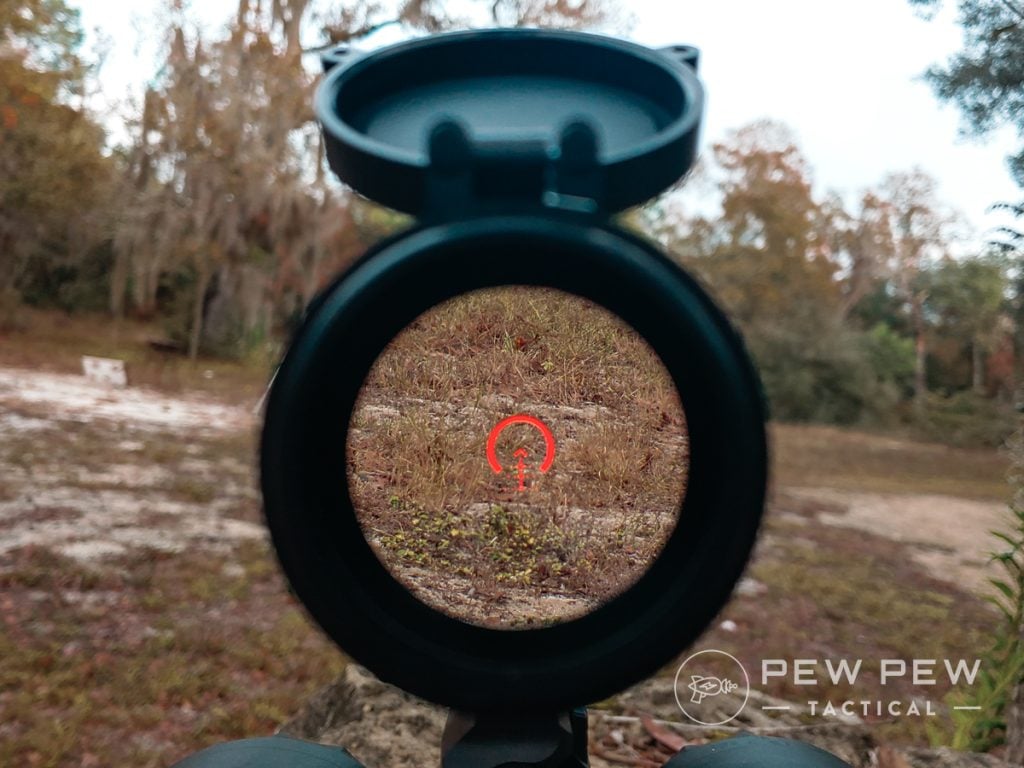
That was the standard at one time, but nothing remained the standard for long.
Many of these simple reticles have been replaced with reticles that amount to a multitool of an aiming device. While these modern reticles can differ, most allow the shooter to easily measure windage and elevation to make precision-oriented long-range shots.
Today we are going to provide a high-level overview of the various types of scope reticles and how they work.
Table of Contents
Loading...
Why You Should Trust Us
I’m a Marine Corps infantry veteran, NRA-certified instructor, and concealed carry instructor teaching CCW courses in Florida.
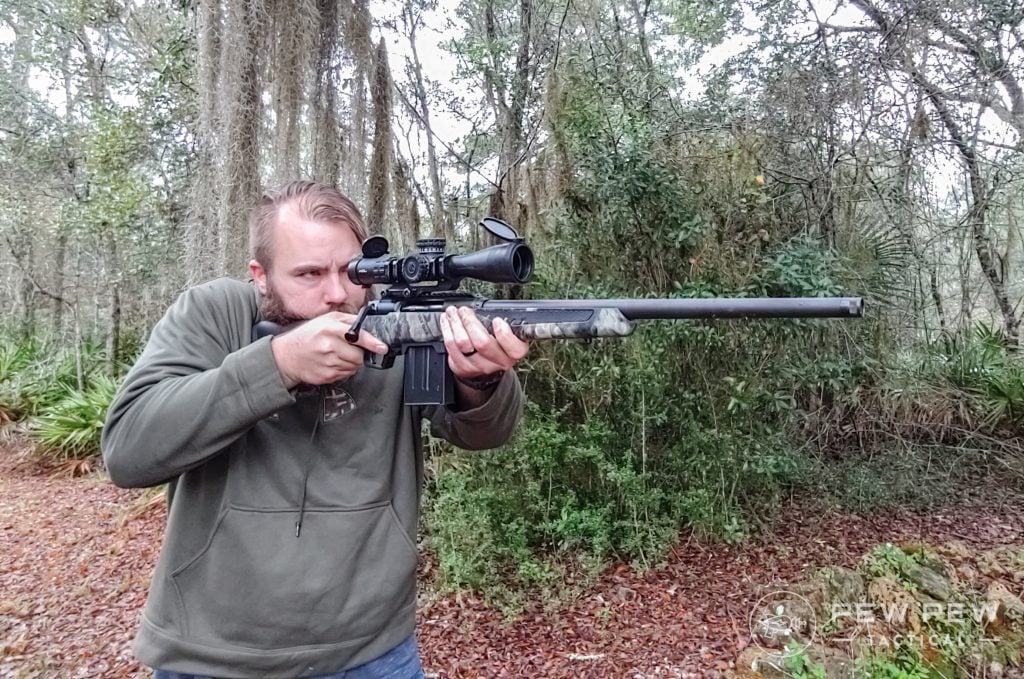
I’ve been testing, researching, and writing about guns, gear, and optics for several years for several publications, including Pew Pew Tactical.
All About Reticles
What’s a reticle?
It’s the device that sits inside your scope and allows you to aim. It’s adjustable and gets zeroed to the rifle and ammo you’re shooting.
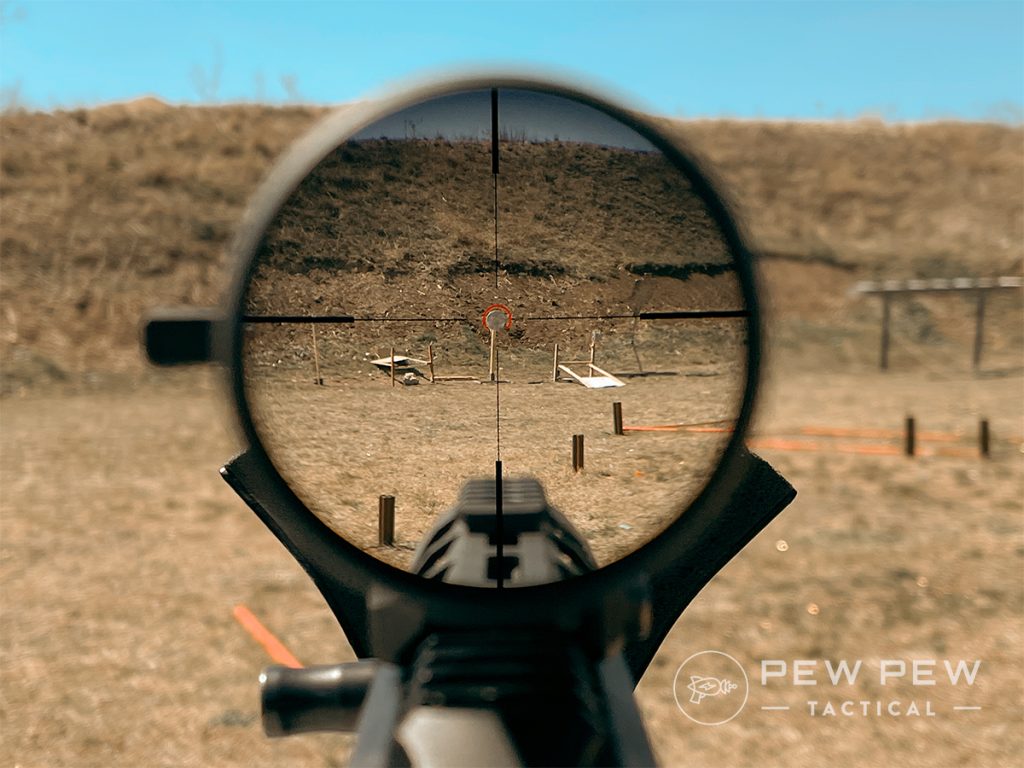
For a long time, the most common reticle type was a simple verticle and horizontal line that dissected the center of the scope lens. These allowed the shooter to take their precision beyond iron sights.
What caused reticles to change was the fact we began to understand ballistics better. Our rifles got better, and our ammo became more consistent. Technology moved forward, and scopes had to follow suit.
When you want to drive every little bit of performance out of a system, you have to address all aspects of the system.
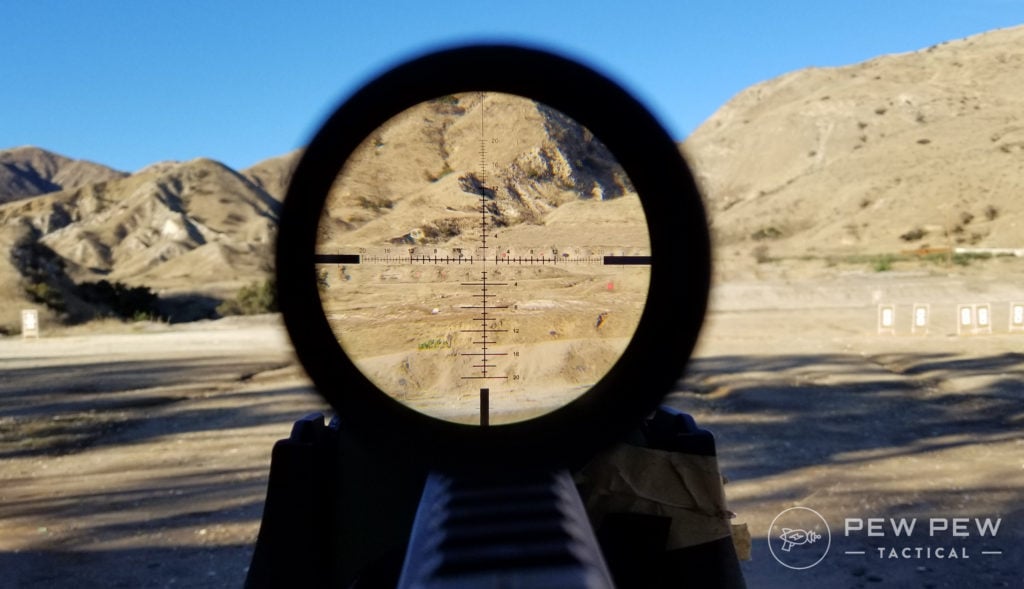
These changes have resulted in a few distinct types of reticles we see today. We have ballistic reticles, bullet drop compensator (BDC) reticles, LPVO-type reticles, and red dots.
Ballistic Reticle
Ballistic reticles can be simple or complicated; it really depends on what you are going for.
They can be broken down into three categories, elevation, windage and elevation, and a more advanced windage and elevation reticle often known as the Christmas tree.
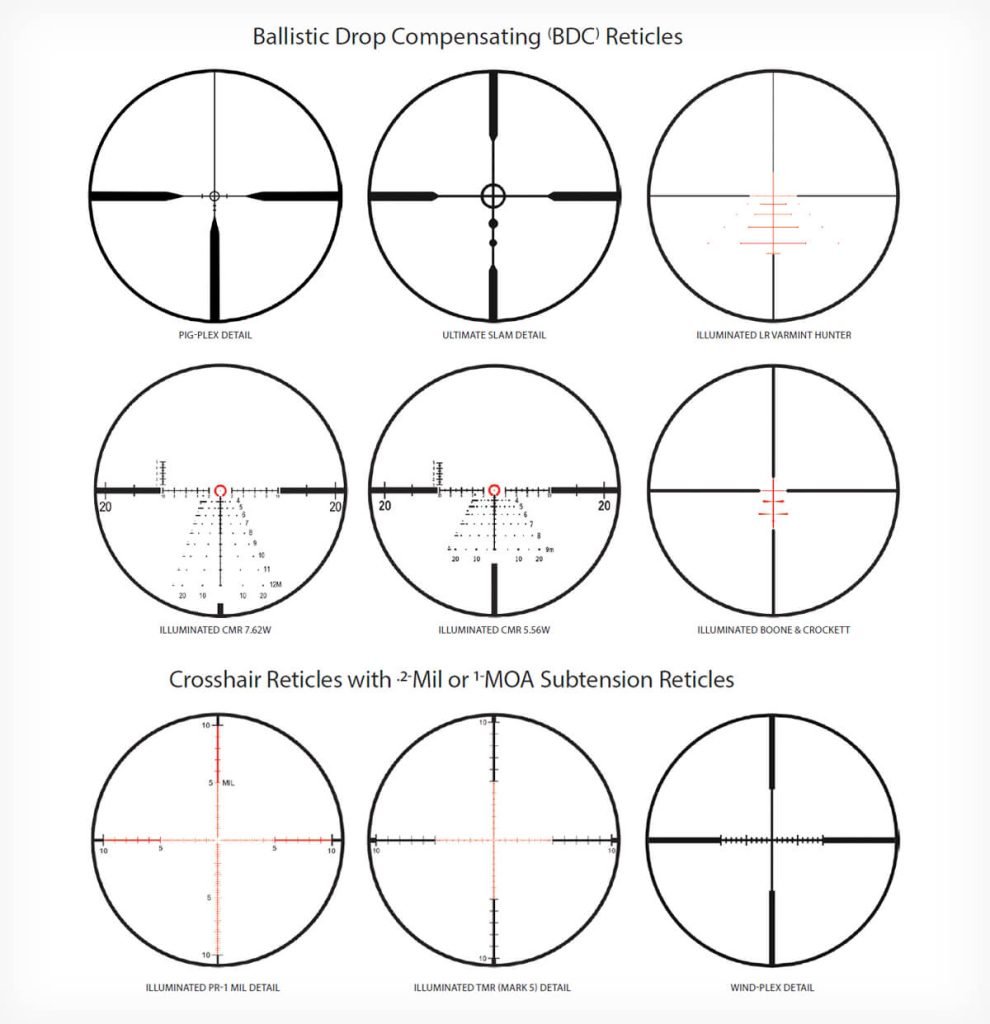
To understand these reticles, you must first understand what elevation and windage mean.
Elevation is a measurement of up and down. With riflescopes, it’s often a measurement of down and coincides with the ballistic drop of a bullet.
Windage is our left to right measurements, and bullets can be affected by wind, which makes windage critical in some environments.
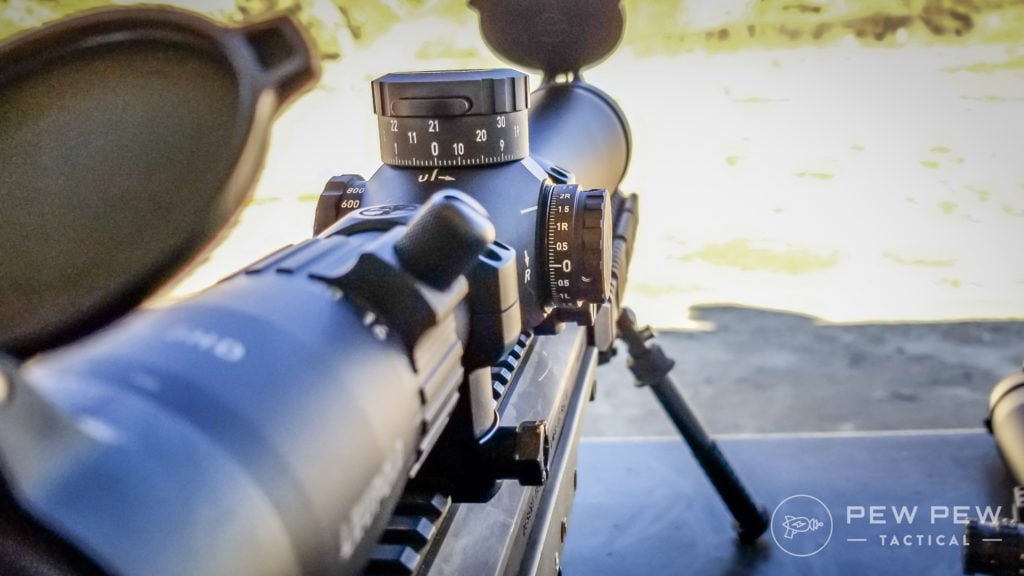
With that out of the way, let’s look at some ballistic reticle types.
Elevation Reticle
These reticles are often simple duplex (two-lines) designs, but the bottom crosshair will feature some form of dot, line, or other hashmark to symbolize a specific measurement of bullet drop.
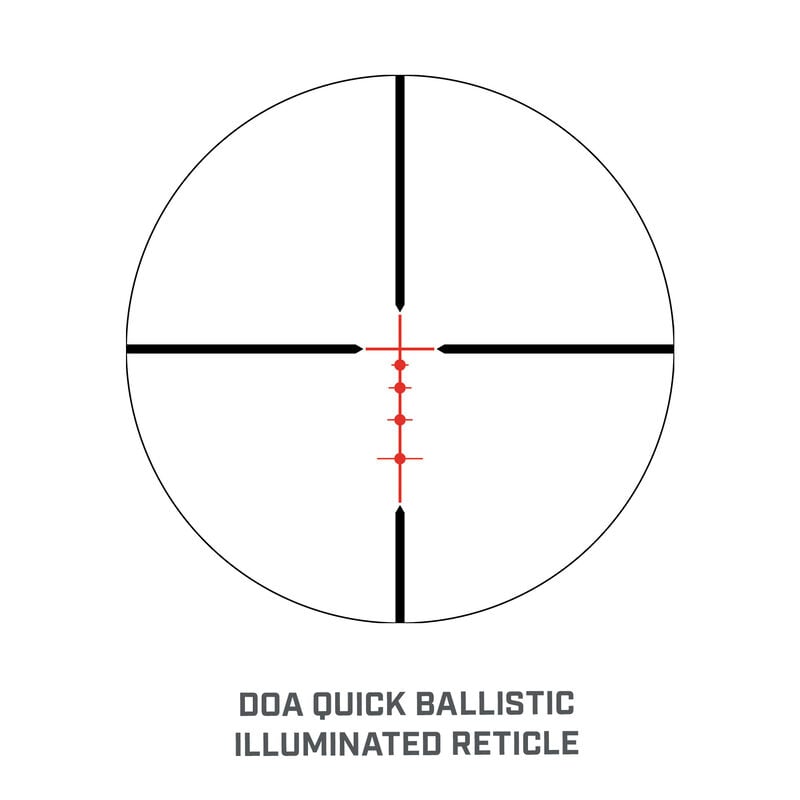
This allows for simple elevation calls to ensure accuracy over range.
Elevation and Windage Reticle
These reticles are also typically duplex designs.
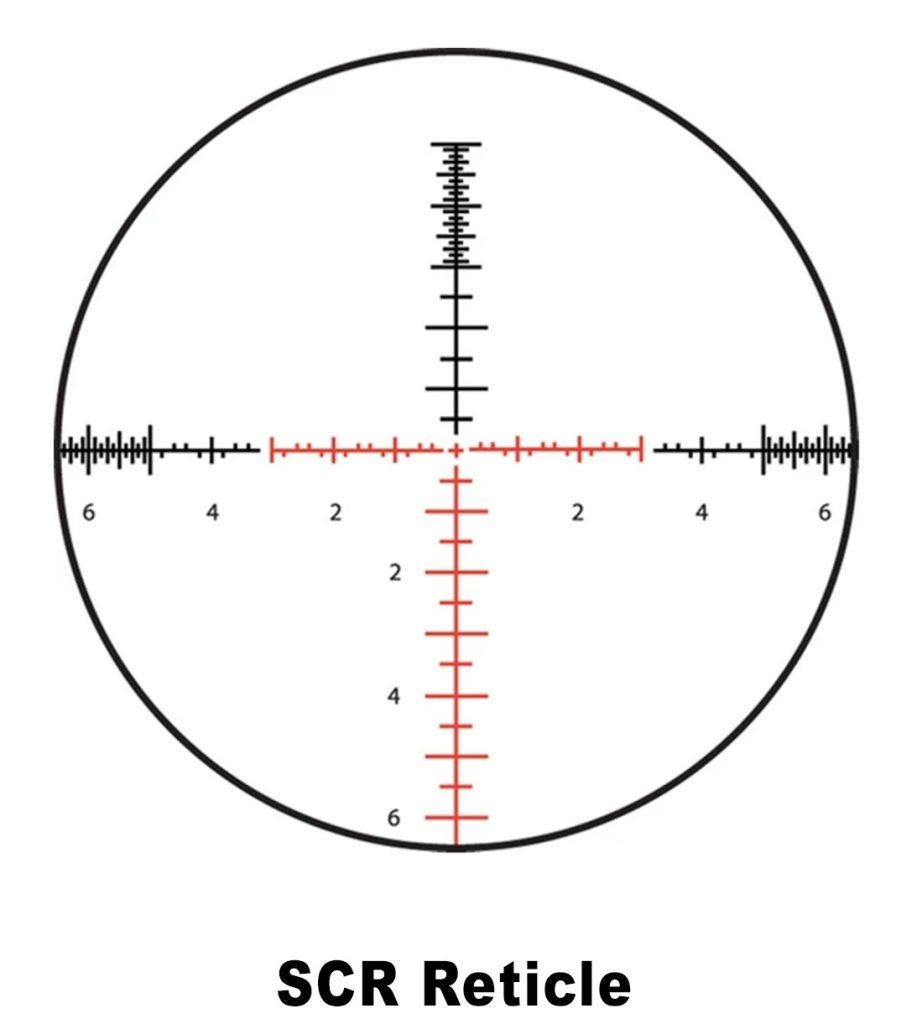
The vertical portion of the reticle will feature markings for ballistic drop, but the horizontal portion of the reticle will also feature similar markings to allow the shooter to estimate windage adjustments.
Christmas Tree
Christmas tree reticles feature windage and elevation adjustments along each axis. But in addition, there will be windage and elevation marks below the center line and steadily moving away from the reticle.
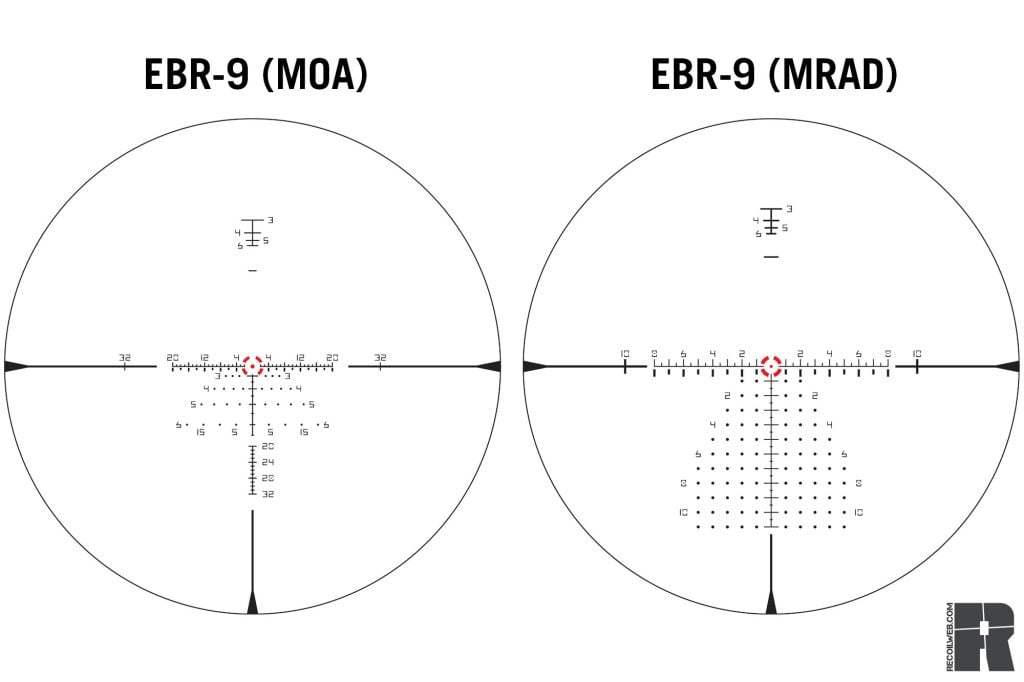
This allows for precise windage and elevation calls without needing to guess where the intersection of those lines would be on a standard elevation and windage reticle.
Bullet Drop Compensator Reticle
A bullet drop compensator reticle, or BDC, is a reticle designed around a specific weapon system and caliber.
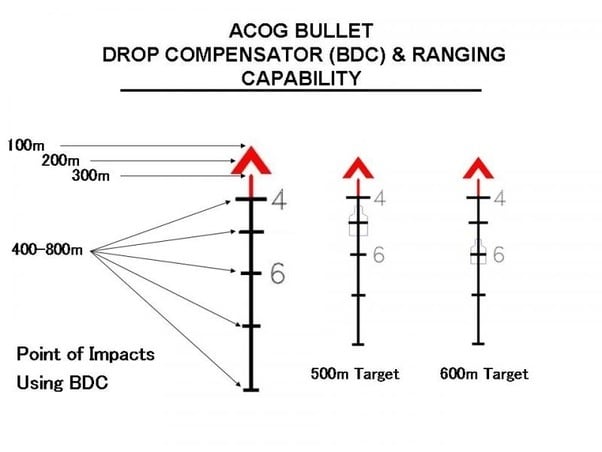
This comes in the form of preset ballistic drop points tuned to specific ranges, which makes longer shots easier. All the shooter needs is a properly zeroed optic with the correct rifle and caliber.
LPVO-Type
I use the term LPVO type because there isn’t a universally accepted name for these reticles, but they are common on LPVOs (low-power variable optics).
With that said, they are not universal, and LPVOs often utilize a variety of reticles.
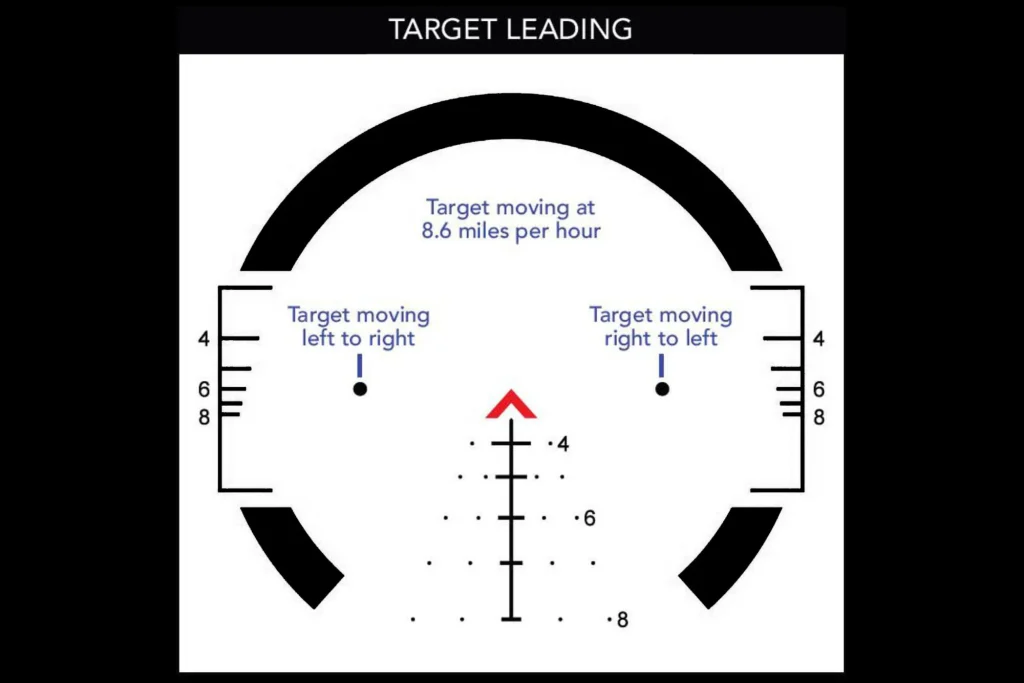
These reticles often mix the functions of a ballistic reticle with a bullet drop compensator. They also often feature illumination at the center to provide a quasi-red dot design at lower magnifications.
Some may also have built-in range finders and leads for moving targets.
Red Dot Options
Red dot reticles have evolved past their namesake of just being a simple dot only. Many now use a 65 or 68-MOA circle with a dot in the center that was popularized by EOTech.

Versatility is the name of the game with this reticle. Not only does it provide a large, easy-to-see reticle, but it also acts as a rudimentary range finder.
If a standard-size person fills the circle, he’s 100 yards away; if he fills the reticle from the dot to the bottom, he’s two hundred yards out, and so on and so forth.
What Affects Ballistic Reticles
While the above covers a basic breakdown of ballistic reticles, there are a few additional factors to consider.
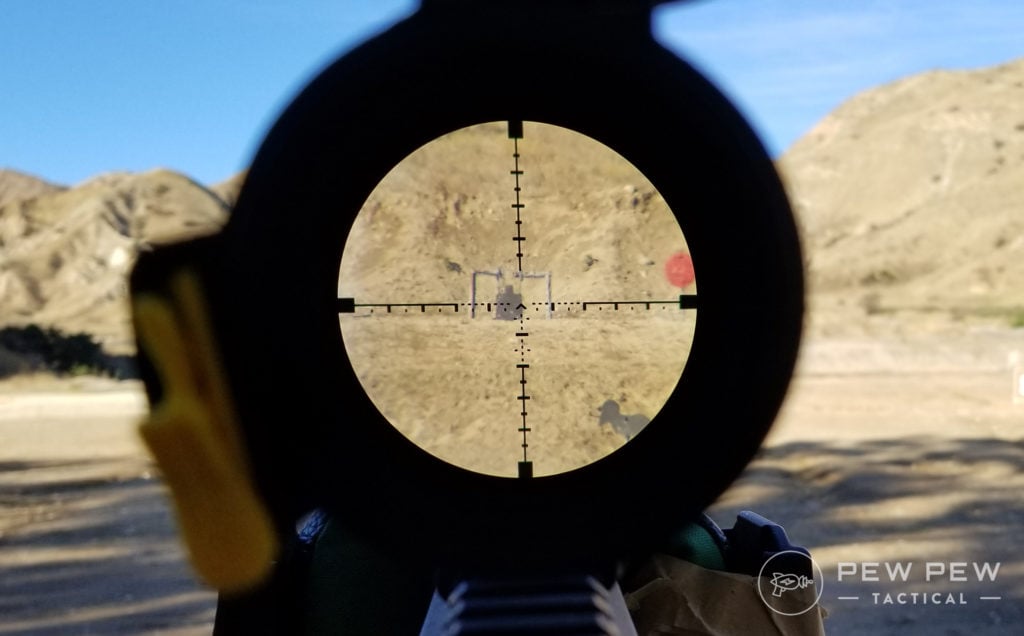
Measurements: MIL and MOA
Ballistic drop reticles will place those hash marks, dots, etc., at various measurements. These measurements will be either in MIL or MOA.
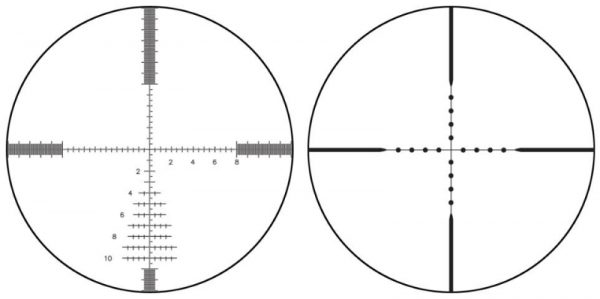
Both are means to measure angles, which is the best way to measure the flight path of a bullet. While MIL and MOA are similar, the measurements are different.
MOA stands for Minute of Angle. We break a circle down to 360 degrees, and then we break it down one more time. Each degree has 60 minutes in it. That gives us our minutes of angle.
For shooting, 1 MOA equals 1.047 inches at one hundred yards. This is often rounded to 1 inch at one hundred yards.

Ballistic reticles will often come in MOA measurements, so each hash mark is a certain MOA away from each other.
If the hash marks are each 1 MOA, we know that five hash marks equals five MOA, which represents five inches of drop at 100 yards.
Most precision shooters do not use MOA, and it is often used by more casual shooters or shooters who are not interested in long-range shooting. MOA is very common due to its simpler nature.
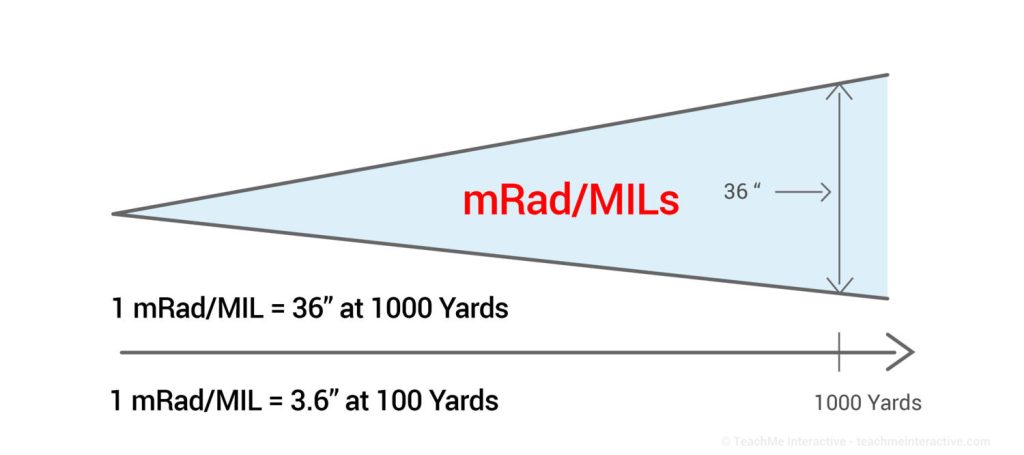
MIL stands for milliradians. A radian is 57.3 degrees, and there are 1,000 milliradians in a radian.
A circle equals 6,283 milliradians. One MIL equals 3.6 inches at 100 yards. Each MIL equals 3.6 inches of drop in most MIL reticles.
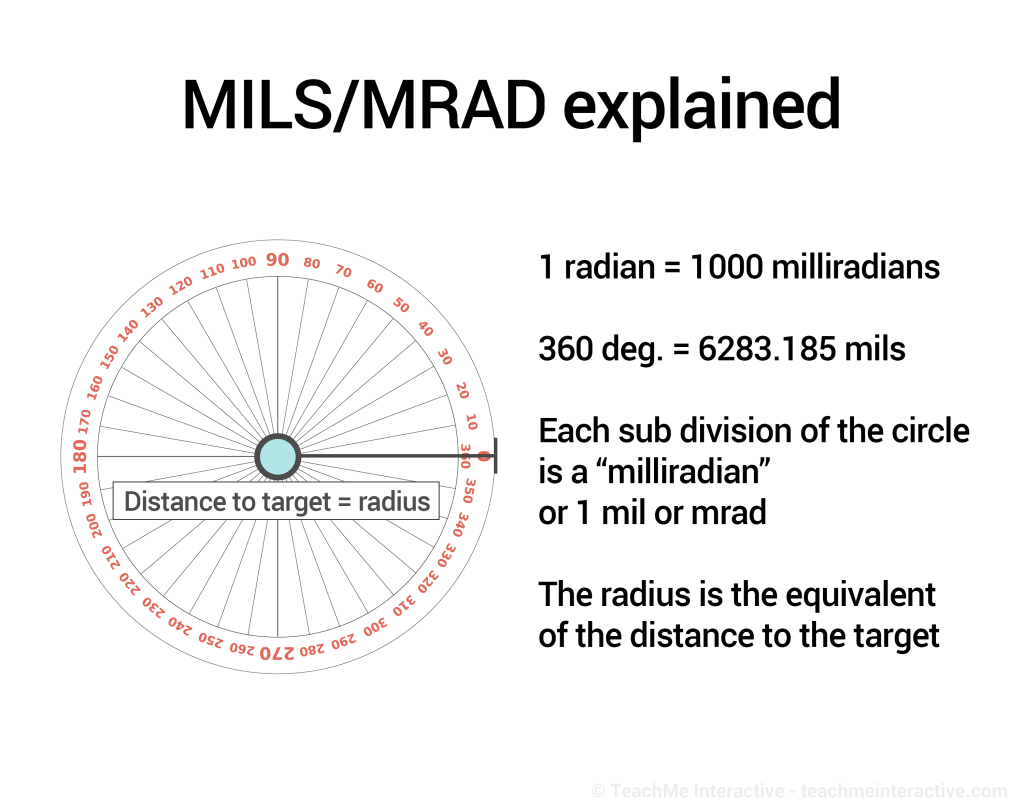
Long-range shooters typically use MIL reticles because they can show greater degrees of drop for shooting over longer distances without the need for an incredibly complicated reticle.
Focal Plane
Focal plane is something that affects variable power rifle scopes; it does not come into play with red dots or fixed power scopes.
I won’t dive too deep into this, but the focal plane does affect how a reticle functions.
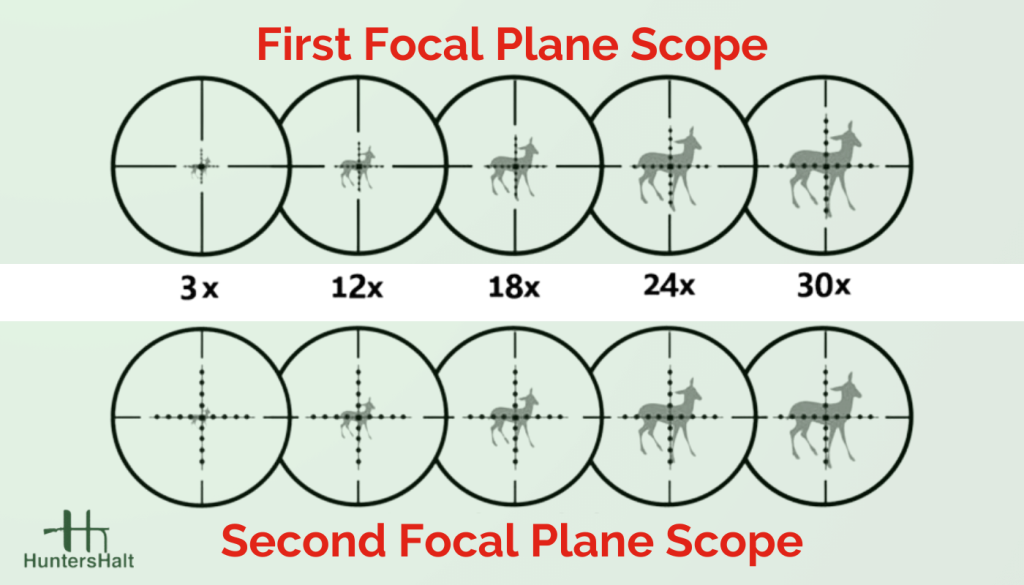
Second focal plane optics have a reticle that remains the same size as the magnification increases or decreases. This means the ballistic drop points are only accurate at a single magnification setting.
You’ll need to research which magnification setting works with your reticle. It’s most often the highest.
First focal plane scopes feature a reticle that grows and shrinks as magnification changes. Their ballistic drop and windage measurements are accurate at any magnification.
Since the reticle changes size, it can sometimes look completely different depending on the magnification.
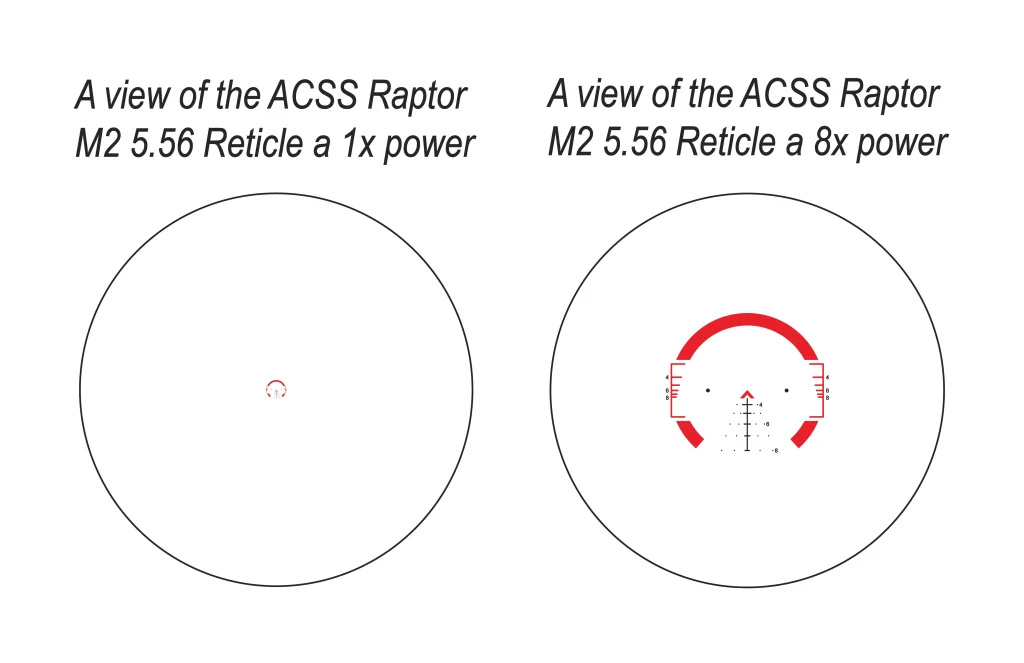
For example, the Primary Arms ACSS Raptor M2 reticle functions more like a red dot at 1X.
Barrel Length, Ammo Weight, and Load Data
Bullet drop compensating reticles are designed for specific calibers and often specific weapons.
Factors like barrel length ammo type come into play with BDC reticles. An ACOG designed for a 20-inch 5.56 AR-15 shooting M885 will not be entirely accurate for a 16-inch carbine shooting M193.
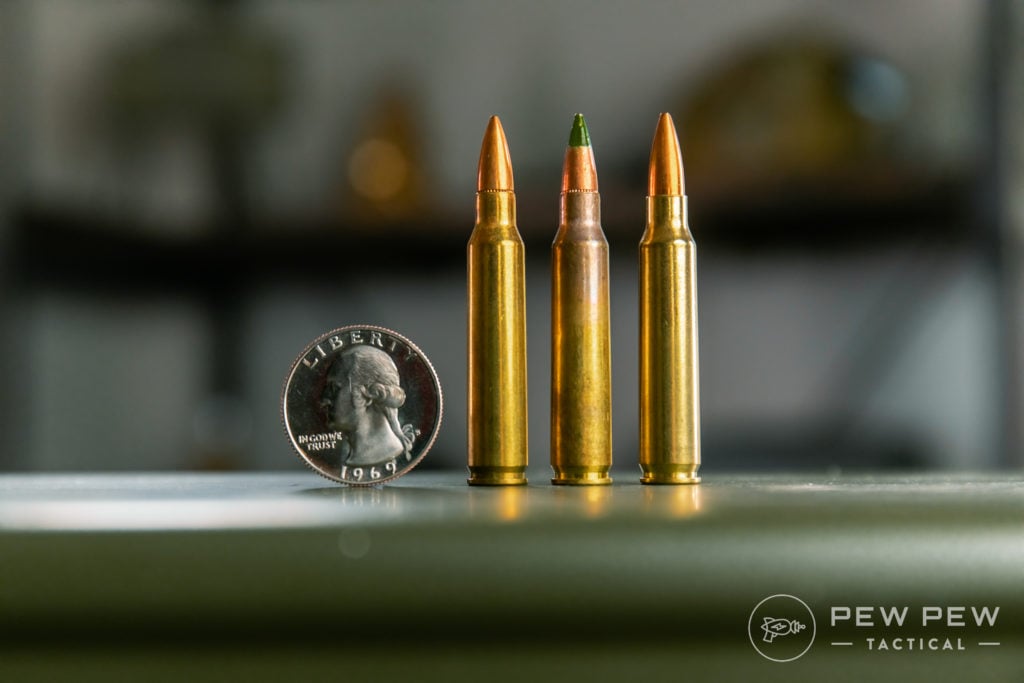
If you purchase a BDC reticle, it’s wise to understand what barrel length and caliber it works best with and what zero should be used to get the most out of your optic.
Final Thoughts
Have you ever said something so much that it begins to sound weird? That’s how I feel at the end of this article with the word reticle.
According to CTRL-F, I typed it 58 times so far, so I’m ending this now.
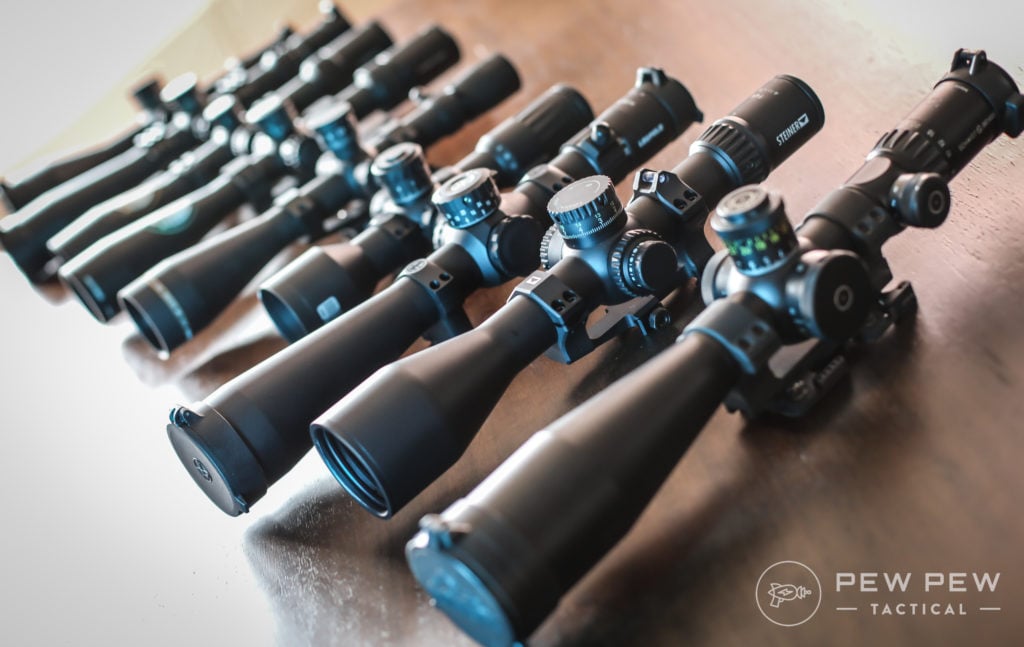
Hopefully, we’ve guided you through the basics of these reticle designs, and you have a clearer understanding of what they do. Don’t have an optic yet? Check out our articles on the Best Affordable Optics and Best Long Range Riflescopes!

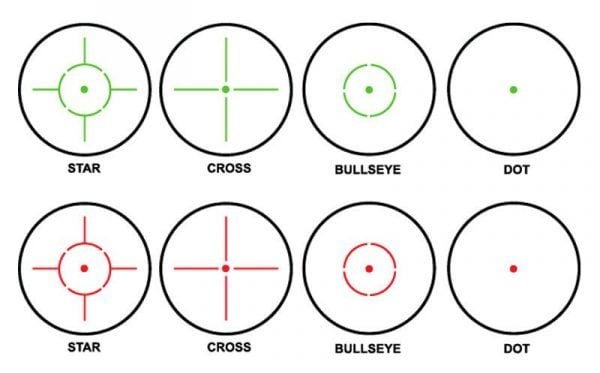








11 Leave a Reply
Excellent presentation, especially for someone who is a novice in the choice and use of rifle/shotgun scopes.
If you aint Cav!!
The information provided ln your web site, has been very informative,and helpful.
I am going to study this material ,and contact pew,pew soon.
Out to 300 yards a good quality duplex reticle works great. My Leupold VX scopes work fine. So does the one Zeiss scope I have on a 30-06. I may get BDC reticle scopes for the 325wsm rifles to easily and consistently hit out to 500. I’d get into FFP If I had a place to shoot 700 plus. But I don’t. Even getting to a 500 yard range is far and expensive for me. If you got a place to shoot 700 plus it would be better to get FFP with mil dot reticle and adjustments.. And it would help then to brush up on math and meteorology.
This site gives us much food for thought and guidance for choosing the right optic for our rifles. The best comment was , if you're not going to shoot at 1000 yards don't buy a scope to do so. It's dead weight. I shoot at 100,200 and 300 yard ranges and my scopes do just fine.I shoot quarter size and smaller at 100 and 3" targets at 300. Annually I shoot at a 400+ yard range and it takes me a little while to zero in but that's when the fun starts. The better the scope the better you shoot. You get what you pay for. Ask any serious shooter.
Nice article, very informative. I recently went through this decision making process. Already had a Vortex Strike Eagle 1-6x24 but I wanted something with higher magnification for longer distances. Decided to go with FFP. Most FFP scopes I found are a lot of money. I ended up getting a Burris Veracity 4-20x50 FFP for $645 after rebate. I’m very happy with it. If you’re interested in this style scope but you don’t want to spend the loot for a Vortex Viper, Zeiss, Nightforce, etc., check out Burris. They now offer a lifetime warranty like Vortex.
While I empathize with your words " While the high dollar scopes look cool and having a rifle that can reach out to 1,000 yards is awesome bragging rights, will you really use it? ', I question your rationalize to question it.
I realize that while it may not be using a tool to it's full potential, it is knowing that it has the capability.
Having a sailboat that can cross oceans needing only food and fresh catch, or a car that can go from here to there is X seconds is not a matter of exploiting,,, it is a simply a matter of knowing your tool has the 'potential'
Having 'potential does not require proof, it only requires the acceptance that you possess something of greater 'potential' than your needs.
If I ever need a 1000 yard kill shot, I will know that my family's dinner table will be set... if I can own up to the potential of my firearm.
"If I ever need a 1000 yard kill shot, I will know that my family’s dinner table will be set… if I can own up to the potential of my firearm."
Probably NOT. Because you are probably not a solo blue water sailor, probably not a race car driver, and probably not a thousand yard shooter. Each of these requires specific skills and constant practice.
Bottom line: We are right back to the author's point.... Anyone with a fat wallet can buy a rifle that far exceeds his (or her) capabilities -- and if all you are interested in is the opportunity to show off your fancy toys to impress other shallow twits, then you will be in like-minded company.
Ah, downwards snobbery. Got to love people that gatekeep what tools others can use.
Well, no. Not really.
Having shot out to a mile and many times to 1000yd, I know not many shooters who do this would try to cleanly kill any animal at 1000yd. Depending on your caliber with most common hunting calibers , you do not maintain enough kinetic energy to ethically do it but the metal plate will still go "ting".
total agree with your assessment